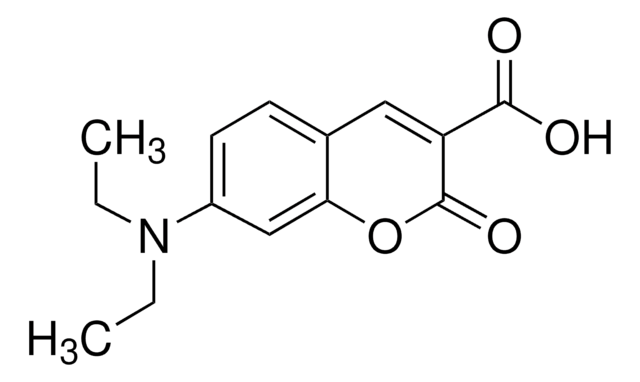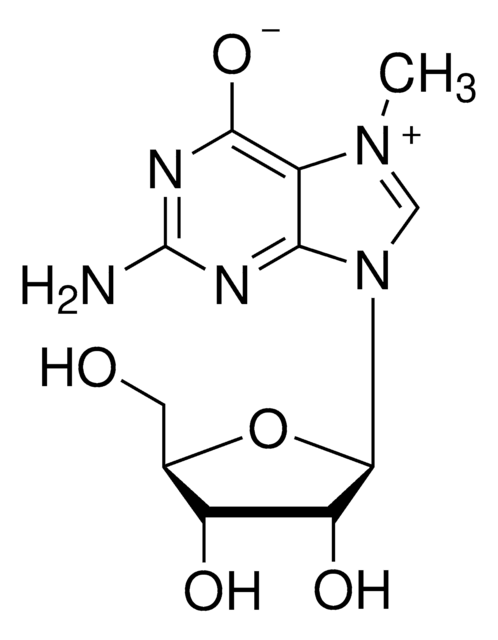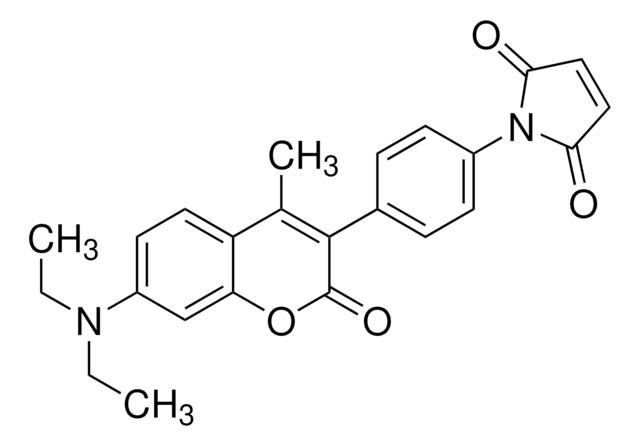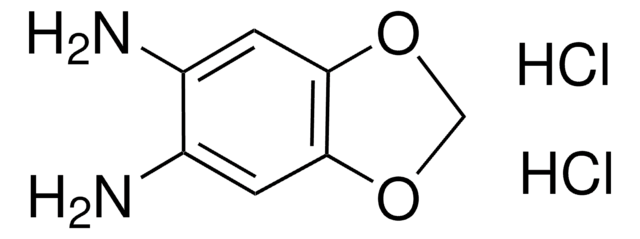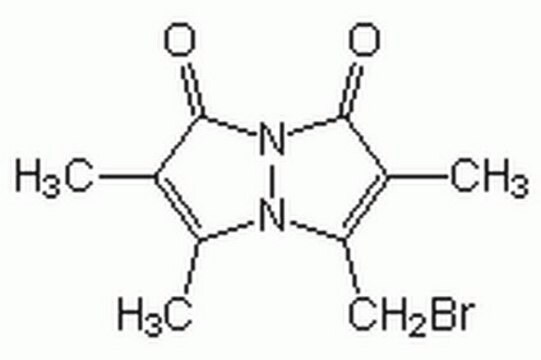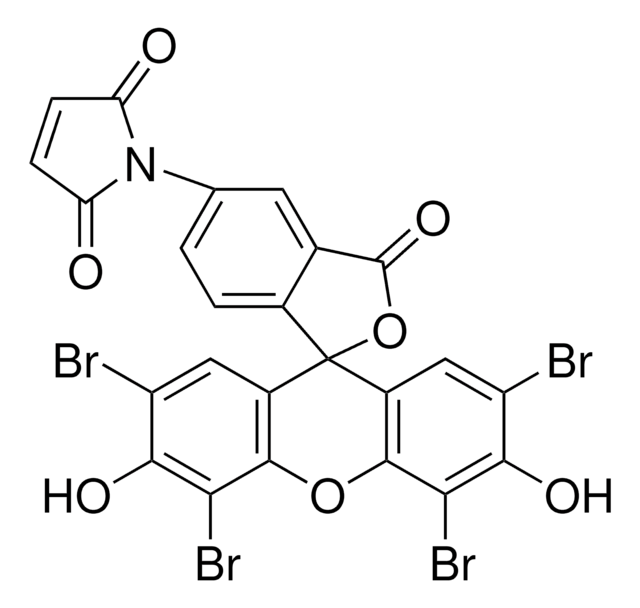05019
7-Diethylamino-3-[N-(2-maleimidoethyl)carbamoyl]coumarin
suitable for fluorescence, BioReagent, ≥97.0% (HPLC)
Synonym(s):
MDCC
Sign Into View Organizational & Contract Pricing
All Photos(1)
About This Item
Empirical Formula (Hill Notation):
C20H21N3O5
CAS Number:
Molecular Weight:
383.40
MDL number:
UNSPSC Code:
12352116
PubChem Substance ID:
NACRES:
NA.32
Recommended Products
product line
BioReagent
Quality Level
Assay
≥97.0% (HPLC)
suitability
suitable for fluorescence
SMILES string
CCN(CC)c1ccc2C=C(C(=O)NCCN3C(=O)C=CC3=O)C(=O)Oc2c1
InChI
1S/C20H21N3O5/c1-3-22(4-2)14-6-5-13-11-15(20(27)28-16(13)12-14)19(26)21-9-10-23-17(24)7-8-18(23)25/h5-8,11-12H,3-4,9-10H2,1-2H3,(H,21,26)
InChI key
IXQPRUQVJIJUEB-UHFFFAOYSA-N
Application
7-Diethylamino-3-[N-(2-maleimidoethyl)carbamoyl]coumarin is utilized as a fluoresencent biological sensing device . Used for real-time measurements for the release of inorganic phosphates during enzymatic reaction when MDCC is conjugated to a mutant phosphate-binding protein . Also, utilized for intramolecular fluorescence energy transfer (FRET) experiments .
Thiol-reactive probe for protein labelling
Not finding the right product?
Try our Product Selector Tool.
Signal Word
Warning
Hazard Statements
Hazard Classifications
Acute Tox. 4 Oral
Storage Class Code
11 - Combustible Solids
WGK
WGK 3
Flash Point(F)
Not applicable
Flash Point(C)
Not applicable
Personal Protective Equipment
dust mask type N95 (US), Eyeshields, Gloves
Choose from one of the most recent versions:
Already Own This Product?
Find documentation for the products that you have recently purchased in the Document Library.
Customers Also Viewed
A Vandecandelaere et al.
Biochemistry, 38(25), 8179-8188 (1999-07-01)
The molecular mechanism underlying microtubule dynamic instability depends on the relationship between the addition of tubulin-GTP to a growing microtubule and its hydrolysis in the microtubule lattice to tubulin-GDP, with release of inorganic phosphate (Pi). Since this relationship remains controversial
Z He et al.
Biophysical journal, 75(5), 2389-2401 (1998-10-28)
Inorganic phosphate (Pi) release was determined by means of a fluorescent Pi-probe in single permeabilized rabbit soleus and psoas muscle fibers. Measurements of Pi release followed photoliberation of approximately 1.5 mM ATP by flash photolysis of NPE-caged ATP in the
Adam Shutes et al.
Methods in enzymology, 407, 9-22 (2006-06-08)
Ras proteins are small GTPases that exhibit high-affinity binding to GDP and GTP and hydrolyze bound GTP to GDP. The intrinsic GTPase activity of Ras proteins is accelerated by GTPase activating proteins (GAPs), which act to attenuate GTPase signaling by
Simone Kunzelmann et al.
The Journal of biological chemistry, 284(48), 33130-33138 (2009-10-06)
Nearly every cellular process requires the presence of ATP. This is reflected in the vast number of enzymes like kinases or ATP hydrolases, both of which cleave the terminal phosphate from ATP, thereby releasing ADP. Despite the fact that ATP
Robert A Phillips et al.
Biochemistry, 42(13), 3956-3965 (2003-04-02)
Individual rate constants have been determined for each step of the Ras.GTP hydrolysis mechanism, activated by neurofibromin. Fluorescence intensity and anisotropy stopped-flow measurements used the fluorescent GTP analogue, mantGTP (2'(3')-O-(N-methylanthraniloyl)GTP), to determine rate constants for binding and release of neurofibromin.
Our team of scientists has experience in all areas of research including Life Science, Material Science, Chemical Synthesis, Chromatography, Analytical and many others.
Contact Technical Service